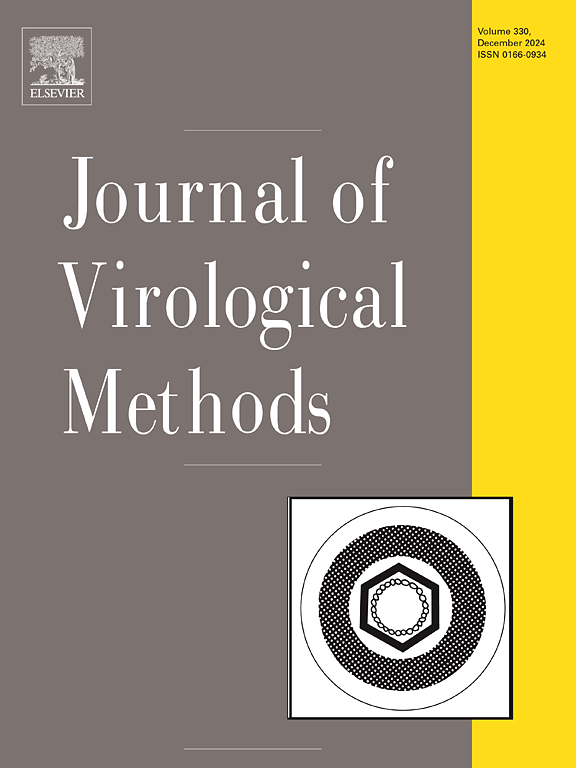Development of an ARMS-Quadruplex-qPCR assay for the rapid identification of MPXV and the clades Ia, Ib, IIa and IIb
IF 2.2
4区 医学
Q3 BIOCHEMICAL RESEARCH METHODS
引用次数: 0
Abstract
Monkeypox was re-emerging in 2022 and spread to more than 100 countries. Two clades of Monkeypox virus (MPXV) result in different lethality rates and varying transmission capabilities. Rapid identification of MPXV and differentiation of its clades and subclades are crucial for effective control of the disease. In this study, we developed an ARMS-Quadruplex-qPCR method to detect MPXV and distinguish clades (Ia, Ib, IIa and IIb). F3L gene was used to detect all clades of MPXV from other orthopoxviruses. A 1953 bp fragment containing the C3L gene was found to be completely absent in clade II. Additionally, a sequence spanning from the 177th to the 1318th position (1142 bp) within the 1953 bp fragment was missing in Ib. Therefore, the 1142 bp sequence was used to distinguish Ia from other subclades, and the sequence with the 1142 bp region missing in Ib was used to discriminate Ib from other subclades. Since subclades IIa and IIb are too close to have large deletions and insertions, a unique single nucleotide polymorphism (SNP) was used to design a primer/probe set for ARMS-qPCR to differentiate clade IIa from IIb. The ARMS-Quadruplex-qPCR system can detect down to 2 copies per reaction of MPXV and effectively differentiate all the four subclades. Altogether, four qPCR primer/probe sets in one tube were deployed to recognize MPXV and differentiate MPXV subclades. The high sensitivity, rapidity and specificity of the developed system make it a promising alternative for the diagnosis of MPXV and the determination of the subclades of the infected MPXV.
求助全文
约1分钟内获得全文
求助全文
来源期刊
CiteScore
5.80
自引率
0.00%
发文量
209
审稿时长
41 days
期刊介绍:
The Journal of Virological Methods focuses on original, high quality research papers that describe novel and comprehensively tested methods which enhance human, animal, plant, bacterial or environmental virology and prions research and discovery.
The methods may include, but not limited to, the study of:
Viral components and morphology-
Virus isolation, propagation and development of viral vectors-
Viral pathogenesis, oncogenesis, vaccines and antivirals-
Virus replication, host-pathogen interactions and responses-
Virus transmission, prevention, control and treatment-
Viral metagenomics and virome-
Virus ecology, adaption and evolution-
Applied virology such as nanotechnology-
Viral diagnosis with novelty and comprehensive evaluation.
We seek articles, systematic reviews, meta-analyses and laboratory protocols that include comprehensive technical details with statistical confirmations that provide validations against current best practice, international standards or quality assurance programs and which advance knowledge in virology leading to improved medical, veterinary or agricultural practices and management.

 求助内容:
求助内容: 应助结果提醒方式:
应助结果提醒方式:


